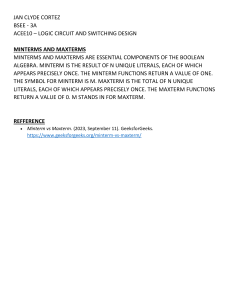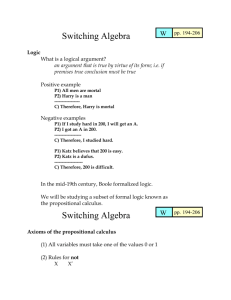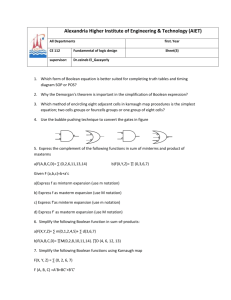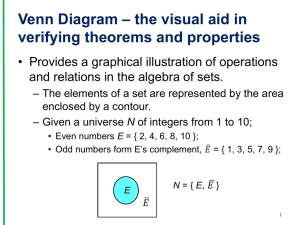Review of Chapter 4 terms
advertisement
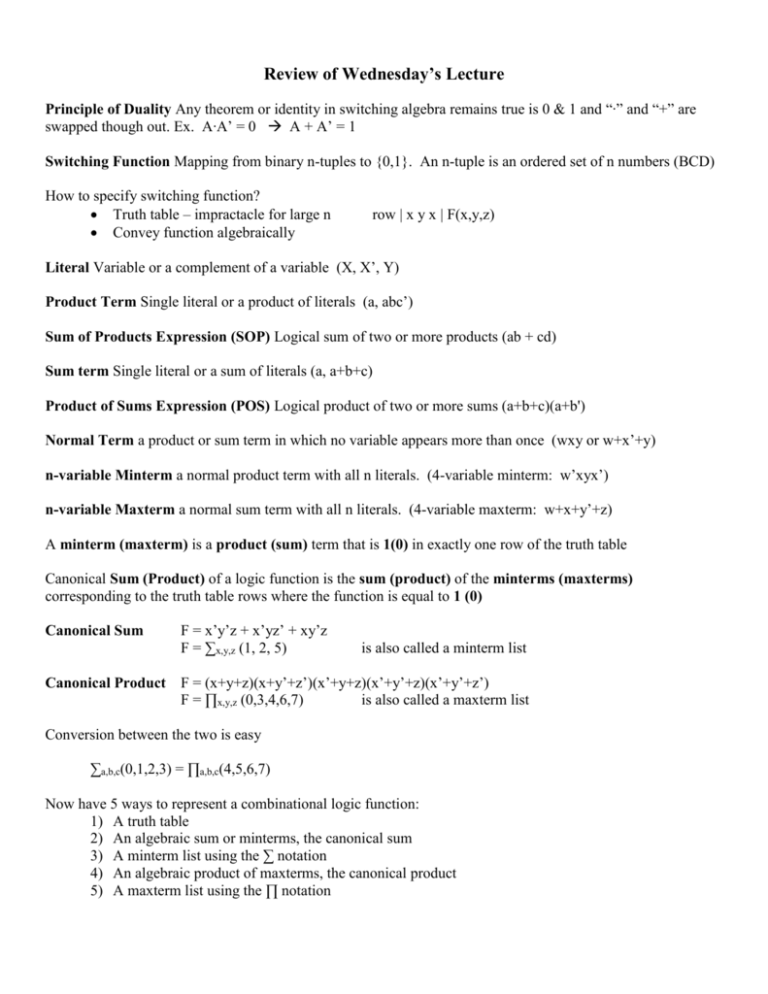
Review of Wednesday’s Lecture
Principle of Duality Any theorem or identity in switching algebra remains true is 0 & 1 and “∙” and “+” are
swapped though out. Ex. A∙A’ = 0 A + A’ = 1
Switching Function Mapping from binary n-tuples to {0,1}. An n-tuple is an ordered set of n numbers (BCD)
How to specify switching function?
Truth table – impractacle for large n
Convey function algebraically
row | x y x | F(x,y,z)
Literal Variable or a complement of a variable (X, X’, Y)
Product Term Single literal or a product of literals (a, abc’)
Sum of Products Expression (SOP) Logical sum of two or more products (ab + cd)
Sum term Single literal or a sum of literals (a, a+b+c)
Product of Sums Expression (POS) Logical product of two or more sums (a+b+c)(a+b')
Normal Term a product or sum term in which no variable appears more than once (wxy or w+x’+y)
n-variable Minterm a normal product term with all n literals. (4-variable minterm: w’xyx’)
n-variable Maxterm a normal sum term with all n literals. (4-variable maxterm: w+x+y’+z)
A minterm (maxterm) is a product (sum) term that is 1(0) in exactly one row of the truth table
Canonical Sum (Product) of a logic function is the sum (product) of the minterms (maxterms)
corresponding to the truth table rows where the function is equal to 1 (0)
Canonical Sum
F = x’y’z + x’yz’ + xy’z
F = ∑x,y,z (1, 2, 5)
is also called a minterm list
Canonical Product F = (x+y+z)(x+y’+z’)(x’+y+z)(x’+y’+z)(x’+y’+z’)
F = ∏x,y,z (0,3,4,6,7)
is also called a maxterm list
Conversion between the two is easy
∑a,b,c(0,1,2,3) = ∏a,b,c(4,5,6,7)
Now have 5 ways to represent a combinational logic function:
1) A truth table
2) An algebraic sum or minterms, the canonical sum
3) A minterm list using the ∑ notation
4) An algebraic product of maxterms, the canonical product
5) A maxterm list using the ∏ notation
